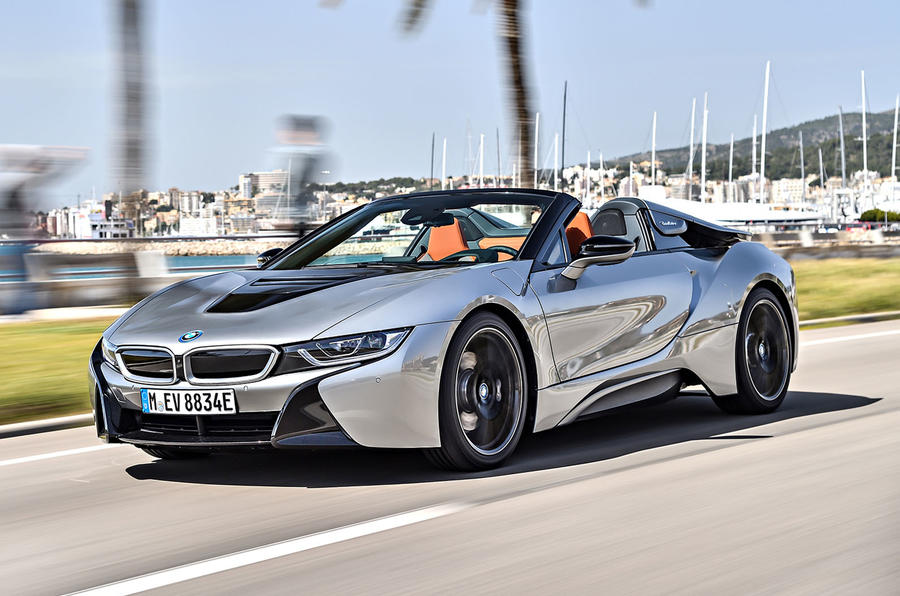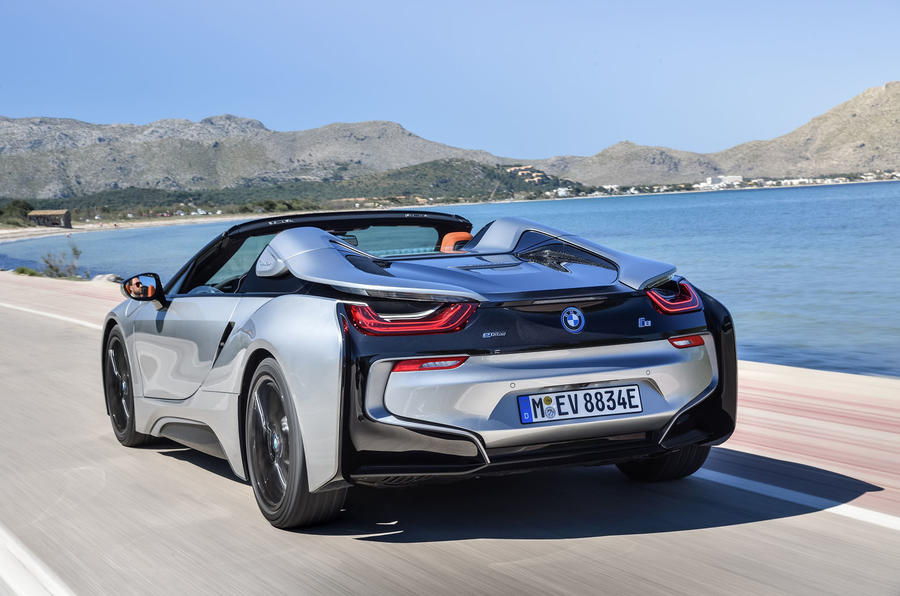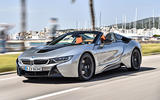What is it?
The BMW i8 Roadster is the i8 that we all know and admire, only sans roof.
Given that the removal of the hybrid sports coupé’s lid only improves its futuristic, out-of-this-world profile, you could argue that it’s the car the i8 should have been when it originally came on stream back in 2014.
That it’s taken this long for BMW to begin rolling Roadsters off the production lines seems a tad odd, particularly when you consider the fact that it expects the £124,735 model to outsell its hardtop stablemate at a rate of three to one, despite the fact it commands a £12,000 premium.
Yet when you take a look at the spec sheets for both cars, you can see why buyers might not be too phased by this price hike. Because of the i8’s unique architecture, which combines an aluminium chassis with a high-strength, carbonfibre-reinforced polymer passenger (CFRP) cell, the need for additional structural reinforcement to make up for the removal of the roof is significantly reduced.
There are some additional panels in the rear suspension and the windscreen frame is also fashioned out of CFRP, but that’s about it. All up, it makes the Roadster just 60kg heavier than the Coupé - no mean feat when you look at the lard a conventional car is required to pack on in the pursuit of structural strengthening when its roof is chopped off.
This marginal weight gain pays dividends when it comes to performance, too. As with the Coupé, the Roadster’s power is sent to its rear wheels by a turbocharged 1.5-litre three-cylinder petrol engine (related to that you’ll find in the £16,000 Mini One), while an electric motor does the same for the fronts. From a standstill, the Roadster will hit 62mph in 4.6sec - just 0.2sec slower than the Coupé.
And while the petrol engine is no more powerful than it was back in 2014, at 228bhp and 236lb ft, updated battery technology means the motor now produces an additional 12bhp.























































Join the debate
Add your comment
Best looking car IMO
This car is stunning and the regular i8 always drags my attention. BMW hit the nail on the head with this design.
Just need an inline 6 version (or an all electric) with grippier front tyres now...
With or without
The figures....
141 mpg....?, that’s useless!, a more normal way please, or does it have a one gallon tank?